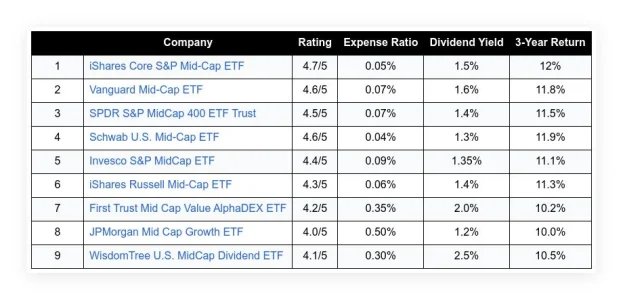Many homeowners are not interested in refinancing because of high-interest rates.
However, if you can reduce your current interest rate by at least 0.75 percentage points, refinancing tends to make sense. Let’s say that your average interest rate on your current mortgage currently is 3.3%. Considering current mortgage rates are almost double this figure, refinancing really isn’t a smart financial option.
Nonetheless, there are still some situations in which a refinance is the best option.
Over the past two years, homeowners have gained a large amount of equity. By refinancing with cash-out, the homeowner can access the equity and pay down higher-interest debt. Consider home equity loans and home equity lines of credit as other options for accessing home equity, so you can see what suits you best.
Homeowners who are nearing the end of their adjustable-rate loan’s fixed-rate period may also benefit from a refinance, even at today’s higher rates. When you switch to a fixed-rate loan, your monthly payments will remain steady and you won’t have to worry about periodic increases.
If a refinance sounds like the right move for you now but you aren’t sure where to start, following these steps can set you on the right path.
Another reason? Rates might lower. And, it appears we’re headed that way.
“If recent trends continue with respect to consistent declines in inflation amidst an increasing risk of recession, we may be near the peak rate for this cycle, now expected to be just over 5 percent,” says Mike Fratantoni, chief economist at the Mortgage Bankers Association.
So, if you are looking to refinance once rates lower, here’s how you can prepare.
Table of Contents
ToggleDetermine a refinancing goal.
If you are considering a refinance, you should determine why you are doing so. Specifically, if you’re refinancing, there should be a good reason why. It is possible, for example, to save money by getting a lower interest rate and a lower monthly payment.
As an alternative, you can refinance your mortgage if you’re comfortable making the same or higher payments. You can also use refinancing to consolidate your debts or to withdraw some equity to pay for repairs or emergency expenses.
When refinancing, it’s important to pinpoint what you’d like to achieve so that you don’t end up with the wrong loan. After all, each loan type offers different benefits.
If you want to guarantee a lower rate permanently, you may want to switch to a fixed-rate mortgage. Or, to pay off your mortgage faster, you may prefer a 15-year loan over a 30-year loan. And, it may also be possible to save on mortgage insurance if you switch from an FHA loan to a conventional mortgage if you have enough equity.
Have you recently been hit with major medical bills, unexpected home repairs, or other expenses that have strained your finances? With a cash-out refi, you can refinance your mortgage and take out more cash at the same time if you’ve built up enough equity.
Overall, in order to determine what type of mortgage product is right for you, you must determine what you want to accomplish with a refi. And, always see which option works best for you by weighing all the options.
Put your math skills to the test.
When you’ve determined your reason for refinancing, choose a loan that will enable you to reach your goal. Again, you may be better off refinancing if you want to reduce your monthly payment, pay your loan off faster, or save on interest. In contrast, if you want to take cash out or consolidate your debt, a cash-out refinance may be right for you.
Aside from the refinancing type, you should also consider the type of loan (adjustable-rate or fixed-rate mortgage), the term (length), and whether you want to offset closing costs or pay points to lower your rate.
Just like when you take out a mortgage loan, you must pay closing costs before your refinance is finalized. Refinance closing costs usually range from 3% – 6% of the loan amount. Your closing costs will, however, vary depending on where you live. Prior to applying for a refinance, make sure you can afford these costs, or ask your lender to roll them into your refinance loan.
In addition to closing costs, you may see the following fees:
- Application fee. When you request a refinance, your lender may charge you an application fee. In order to refinance your loan, you’ll have to pay this fee, regardless of whether you are approved.
- Appraisal fee. In most cases, your lender will require an appraisal before you can refinance. An appraisal assures the lender that your home’s value has not decreased since you bought it. And it also ensures that you don’t borrow more money than you can afford..
- Inspection fee. Before you close on a refinance, some states require a special inspection (like a pest inspection). In addition, certain types of government loans require an inspection.
- Attorney review and closing fee. Refinance documents may need to be reviewed by an attorney before closing in some states. You’ll have to pay the fees of your real estate attorney if you hire one.
- Title search and insurance. Refinancing with a new lender that didn’t service your old loan may require another title search. A title insurance policy may also be required, which protects both you and your lender against other claims.
Identifying your break-even point will help you determine whether a refi is worthwhile. This is the period of time required for the savings to surpass the cost of the new loan. Break-even points can be calculated by multiplying the monthly savings by the loan closing costs.
Your break-even point, for example, would be after 50 months, or about 4 years if your closing costs are $5,000 and your monthly savings are $100. For homeowners who plan to stay in their homes longer than four years, refinancing may be a good idea.
With a mortgage refinance calculator, you can determine whether it’s right to refinance.
[Related: Keeping Payment fees Low for Small Businesses]
Keep an eye on rate reports.
Keep an eye on news reports about rate cuts and mortgage applications in order to be ahead of the game the next time rates drop. In the event of further drops, you may want to make your loan application sooner rather than later.
Some sources with following include Freddie Mac, the Federal Housing Finance Agency, and Bankrate.
You can always ask your lender whether it’s a good time to lock. Have them walk you through various scenarios to determine whether they think rates are likely to go lower. And, it wouldn’t hurt to ask questions like:
- “By locking now, what do I gain?”
- “Do I have a chance of benefiting from refinancing in the future?”
Take a look at your credit history and score.
As with your original home loan, you must qualify for a refinance. A higher credit score will result in better refinance rates from lenders — and a greater chance of approval from underwriters.
Generally, for a conventional refinance, you’ll need a credit score of 620 or higher. But, in some cases, you can refinance with an FHA or VA mortgage with a credit score of 580. Borrowing amounts will be limited, though.
Before refinancing your mortgage with bad credit, spend a few months improving your credit score, if you can. For instance, while you’re waiting to refinance, try paying down some existing debt if your credit score isn’t good-to-excellent. In addition to raising your score, you’ll lower your debt-to-income ratio, too.
A lender also wants a good score and a clean credit history. And, they want to know if you can pay them back.
When it comes to cash-out refinances, though, DTI (debt-to-income) is key. The reason? You’re asking for a much larger loan, so you’ll have higher monthly payments. Having a lower DTI makes you look less risky.
While you wait to take advantage of the next interest rate drop, keeping your DTI low is a key factor for any refinance loan. Therefore, staying vigilant is the most effective way to prepare for the next rate decline. Keep track of your credit score and watch for rate drops. And talk to your lender too.
Do a home equity check.
The equity in your home is the value of your home minus what you owe on it. You can figure it out by checking your mortgage statement. You can then check online home search sites or talk to a realtor to see what your house is worth, such as Zillow’s home price estimate. Your home equity is what’s left over.
Say you still owe $250,000 on your house, but it’s worth $325,000. In this case, your home equity is $75,000.
It’s possible to refinance conventional loans with just 5% equity. But if you have at least 20% equity, you’ll get better rates and fewer fees. Even better? You won’t have to pay private mortgage insurance either.
Simply put, the more equity you have in your house, the safer the loan.
Shop multiple mortgage lenders.
You can save thousands of dollars by getting quotes from three or more lenders. To avoid high rates before your loan closes, discuss what is the right time to lock in your rate once you’ve selected a lender.
Aside from comparing interest rates, consider the fees associated with your new mortgage and whether they will be due upfront or included in the loan. There are times when lenders offer no-closing-cost refinances. In exchange, they charge higher interest rates or increase loan balances.
Gather your paperwork.
In most cases, refinancing your home requires similar paperwork as the original mortgage loan. Even before your lender asks for them, you might want to gather all of the necessary financial documents so the process runs quickly and smoothly.
Typically, you’ll need to provide:
- Personal tax returns for the past two years
- Business tax returns for the past two years — if you own more than 25% of a business
- W-2s or 1099s for the past two years
- Bank statements for the past two months
- Payment proof for alimony or child support
In the case of most online applications, you will be able to link your bank accounts and upload your documents electronically. As soon as your initial application is reviewed by the lender’s underwriting team, you will be notified of what follow-up documents are required.
Prep your home for the appraisal.
To determine your home’s market value, your refinance lender will also request a home appraisal. Appraisals are important because they determine how much equity you have in your home.
As already mentioned, lenders will offer better rates if your home equity is high. Whether you can take cash out of your home if you pursue a cash-out refinance depends on how much equity you have.
When determining your home’s value, an appraiser takes several factors into account, such as its size and features, as well as its condition. Making some general improvements to your home to ensure it is in peak condition is not difficult — even if it’s not feasible to double its square footage before refinancing.
What is the most important way to make the most of your appraisal? Ensure your home complies with health and safety regulations, such as smoke and carbon dioxide detectors. This can result in extra fees, delays, or even ineligibility for the loan if you do not address these issues beforehand.
You’ll also want to spruce up the exterior of your home. Make sure your lawn is mowed, your garden is in order, and your children’s toys are tucked away before the big day.
Prepare your home as if it is about to be sold by staging it. You should repair broken windows, and holes in the wall, and eliminate any clutter in the home. You can boost the value of your house with even the smallest changes.
To help the appraiser compare your home with other similar properties, you may want to itemize any upgrades you have made. Furthermore, letting the lender or appraiser know about any significant improvements you’ve made since buying your house could result in a higher appraisal.
Get back to lenders as soon as possible.
You won’t know exactly how long it will take until you refinance. However, you can usually expect it to take 30 – 45 days. As such, be sure to respond to any inquiries from your lender as soon as possible so that your refinance goes without a hitch.
Remember, in the underwriting process, your lender might ask for more documentation about your credit, work, or finances. If the lender requests these documents, you should send them within a few days, and include your contact information in case they have further questions.
The lender will also send you a Closing Disclosure after they have reviewed your appraisal and underwritten your loan. You will find information about your closing costs, interest rate, and the final terms of your loan in your Closing Disclosure. It is your lender’s responsibility to give you at least three days to review your Disclosure after you have received it. Once you receive your Closing Disclosure, acknowledge receipt as soon as possible.
Lock in your rate.
The moment you’ve found a lender with the best terms and rate, lock it in. By locking in your interest rate, you’ll ensure that your rate won’t increase before you close.
In general, rate locks last between 15 and 60 days. With lenders taking a long time to close these days, you may want to consider locking in for a longer period of time. Rate locks may not be charged by all lenders, but some do. You can expect to pay 0.25% to 0.50% of your total loan amount in rate lock fees. You may also need to pay additional fees if your loan doesn’t close on time.
Timing is everything when it comes to a rate lock. To lock the rate for a certain period of time, consult your lender about how long they typically take to close.
Come to the closing with cash, if needed.
During the closing process, closing costs will be included in the closing disclosure, as well as the loan estimate. At closing, you may have to pay 3 to 5 percent of the total loan amount.
As a result, you might be able to finance the costs, which can run into a few thousand dollars, amortizing them over time. However, you’ll pay a higher interest rate or total loan amount for it, which amounts to more interest over time. You’ll probably be charged a fee for doing it, too.
In short, if you can afford to pay upfront, it makes more financial sense to do so.
Keep tabs on your loan.
Ensure you stay up-to-date on your mortgage by keeping copies of your closing paperwork in a safe place. Also, to keep up with your current mortgage payments, set up automatic payments. In fact, some banks offer lower rates if you enroll in autopay.
Upon closing or many years later, your lender or servicer may resell your loan on the secondary market. In that case, you’ll owe mortgage payments to a different company, so watch for mail notifying you of the change. Nevertheless, the terms themselves should remain the same.
FAQs
1. Is refinancing a smart idea?
To answer this question, keep your goals in mind. If you wish to access your equity, reduce your monthly payment, receive a lower interest rate, or repay your loan sooner, refinancing your home might be a wise choice.
2. Does refinancing always save money?
Sometimes, no.
When interest rates are higher than your current mortgage rate, refinancing may be more expensive than your original mortgage. Examine your current loan and refinance it to a mortgage that is in line with your budget.
3. How does refinancing affect my credit score?
When you refinance, the credit bureaus pull your full credit report and deduct points from your credit score. As such, refinancing may temporarily hurt your score. But it could eventually help. It usually takes 1 year for hard inquiries to show up on your credit report.
When you’re shopping for rates, make sure all lenders submit their inquiries within the same timeframe. A credit bureau will treat several inquiries as one if they’re within 14 to 45 days. You’re more likely to see your score drop if you have multiple hard inquiries.
4. What’s the difference between a rate-and-term refinance and a cash-out refinance?
Rate-and-term refinancing is when you change your interest rate, term, or switch from an adjustable-rate mortgage to a fixed-rate mortgage.
With a rate-and-term refinance, you pay off one loan with the proceeds of the new one. By doing this you can lower your interest rate or shorten the term of your mortgage to build equity faster.
You get more cash than you need to pay off your existing mortgage, closing costs, points, and liens compared to a cash-out refinance. You can spend the cash however you want. Your home usually needs to have more than 20 percent equity to be eligible for cash-out refinancing.
5. Is it necessary to have an attorney to refinance?
When refinancing a mortgage, some states require borrowers to have a lawyer review documents. If you live in a state where refinancing isn’t required, you might want to hire a real estate lawyer to protect your interests.














